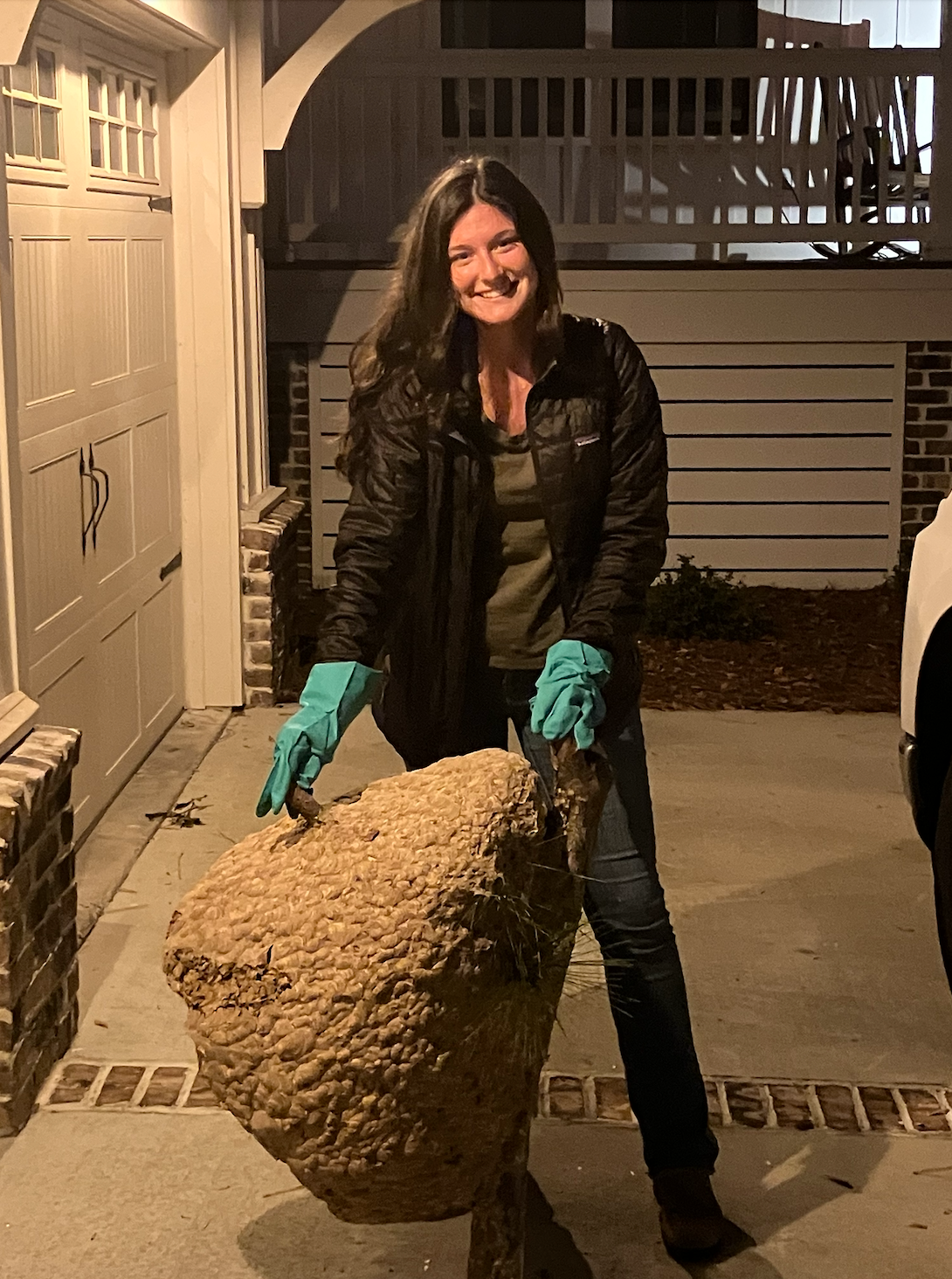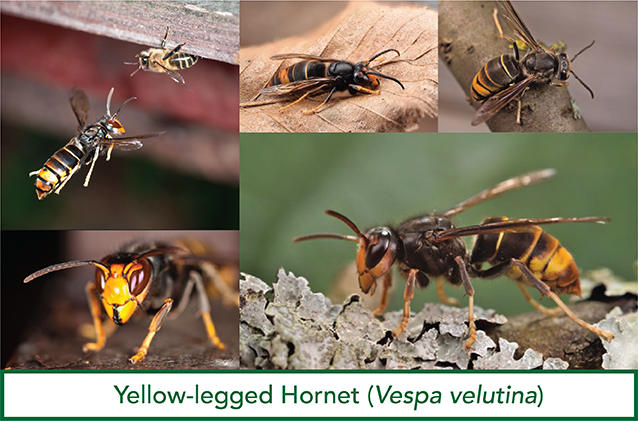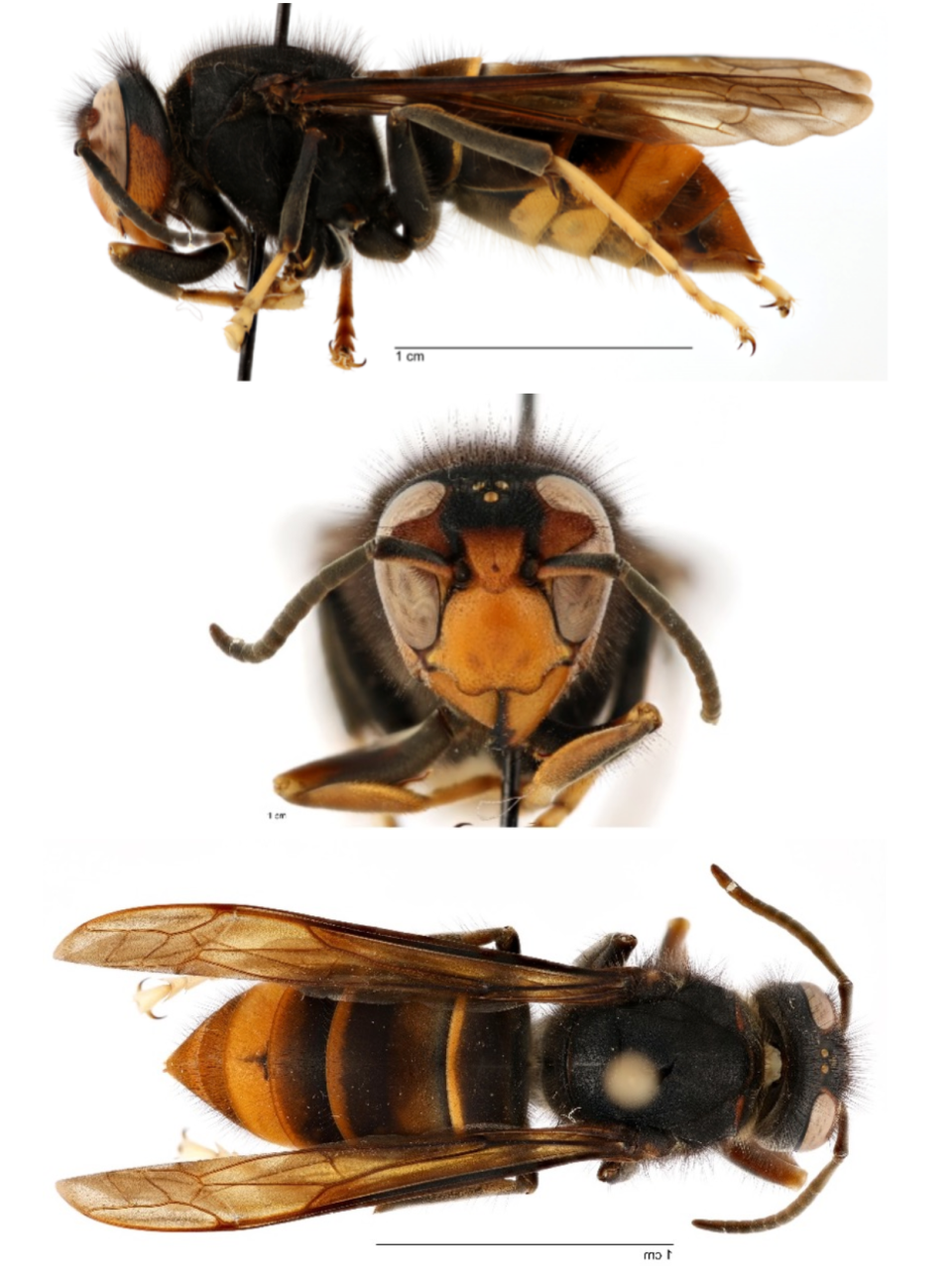3 more yellow-legged hornet nests reported in Georgia. Officials working to stop establishment

Three more yellow-legged hornet nests — in addition to two previously reported — have been found and eradicated in the Savannah area.
The yellow-legged hornet is a non-native species and, if allowed to flourish in the U.S., could threaten native pollinators, honey production and agriculture, according to the Georgia Department of Agriculture.
All three nests have been transported to the University of Georgia to see if there's any queens or male hornets for future production, said GDA's Commissioner Tyler Harper in a press release.
"At the end of the day, we look forward to eradicating this hornet from the state of Georgia so it will no longer be a threat to Georgia's agricultural industry," Harper said. "We've taken a holistic approach from our department and team on the ground."
Harper said that their plant protection division set 170 traps and used tracking devices to trace the location of the hornets. No stings or injuries have occurred.
Where the yellow-legged hornets have been found in Georgia

A Savannah beekeeper discovered the unusual-looking hornet in early August and promptly reported it to the GDA, according to a statement release by the agency. The GDA, in partnership with UGA and the U.S. Department of Agriculture, identified the insect as an invasive yellow-legged hornet in early August, marking the first detection of the species in "the open United States."
Officials located a second yellow-legged hornet nest on Wilmington Island near Savannah on Sept. 15, while pest experts continue efforts to eradicate the insect, a close relative of the "murder hornet," according to GDA. The second nest was discovered by state staff under a bridge on the island and destroyed that evening by the crew who eradicated the first nest last month.
The third nest was found in a pine tree on Oct. 11 at the River Crossings apartment complex in Thunderbolt and was the largest nest found so far in Georgia, Harper said
The fourth nest was found on Oct. 18 in a pine tree at a private residence in Thunderbolt
The fifth nest was found on Oct. 25 on Skidway Island.
Harper noted that there's no reason to believe that the hornets have migrated to other parts of Georgia outside the Savannah area.
Invasive plant taking over popular lake: 'Grows fast and travels fast': Invasive plant spreading in popular Georgia lake
What are the yellow-legged hornets?

State officials said yellow-legged hornets — also called Asian hornets — prey on honeybees and if allowed to establish in the United States may threaten honey production.
The invasive hornet is described as a "social wasp species," meaning it is known to construct communal paper nests, often found hanging from trees or in tree hollows. Also known as Vespa velutina hornets or "Asian hornets," the wasps' nests are generally egg-shaped and can house up to 6,000 worker bees, according to a news release by the GDA.
Their legs are mostly or partially covered in yellow, giving them their name.
How to report yellow-legged hornet sightings
Harper is asking the public to come forward with any sightings to report the hornets. You may find the online form here.
According to the GDA, here's what to include with your report, if possible:
Name and contact information
Location and date of the sighting
If possible, a photograph of the hornet. If not, a description of the size of the insect, the color of the head and body, and what it was doing
Location and approximate height of the nest (if found)
The direction the hornet(s) flew when flying away
He also suggested to sign up for the bi-weekly newsletter, The Yellow-Legged Ledger, for updates on the invasive species.
Georgians with additional questions or concerns are encouraged to email the GDA at yellow.legged.hornet@agr.georgia.gov.
This article originally appeared on Athens Banner-Herald: Yellow-legged hornets nests reported in Savannah, Georgia area

